INSECT HOTELS
All the mini-hotels for bugs that we build are made completely out of recycled materials such as wooden slabs, drawers, unwanted wood, etc., and their fillings are obtained from nature itself, and are also reusable products such as: sticks, logs, bark, old bricks, cans, straw, etc., making the construction of each one of our mini-hotels a selftaught and artisanal labor.
In the process of carrying out our project, with the intention of it being a good contribution to our environment, we have learned a lot about the benefits and precautions we must have with our little bug friends. That is why it is also important to have in mind the location where the mini-hotel will be built – ideally, it should be a sunny place between bushes to protect it from the winds and the rain, and built up-high so it can’t be reached when irrigating your garden.
Another important part is the orientation: If you are in the Southern Hemisphere, it is ideal for the mini-hotel’s orientation to be towards the north. And if you are in the Northern Hemisphere, then the mini-hotel’s orientation should be towards the south.
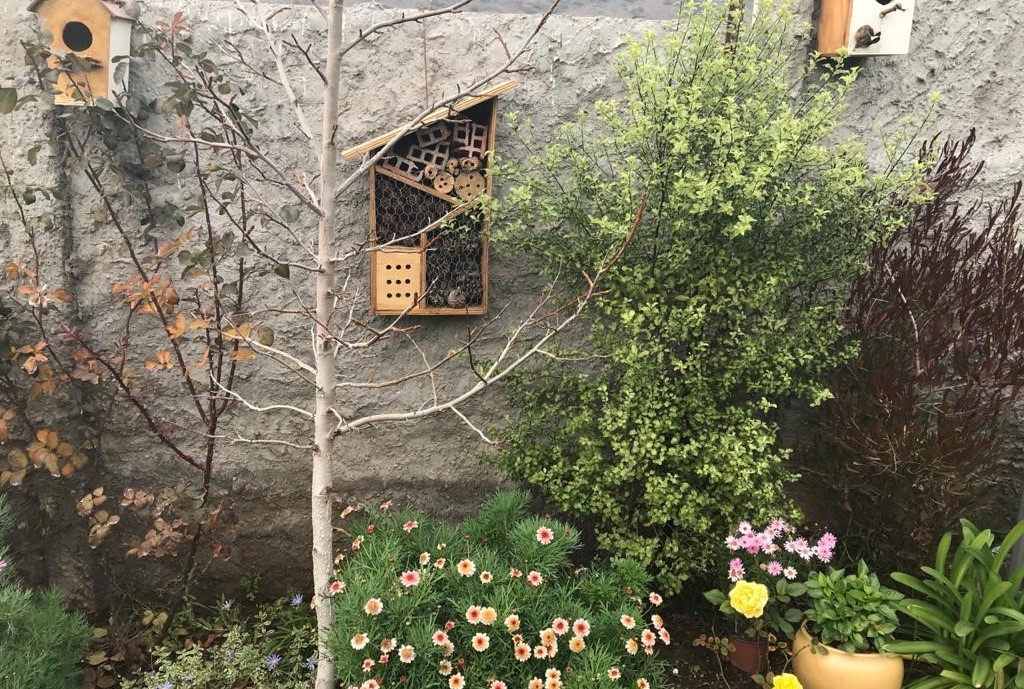
Insect hotels installed
Photography: Techos y Bichos
Bug shelters are something we came across with when completing a course with the friends from “Chile Huerta” about creating self-care spaces through organic food with urban gardens, and how bug shelters can help us create a bio-diverse environment in our garden. Mini-hotels like that are built to shelter beneficial bugs which help us pollinate our flowers and crops, as well as combat in a natural and biological way the pests which can ruin them.
”Mini-hotels, shelter beneficial bugs which help us pollinate our flowers and crops, as well as combat in a natural and biological way the pests on our plants”
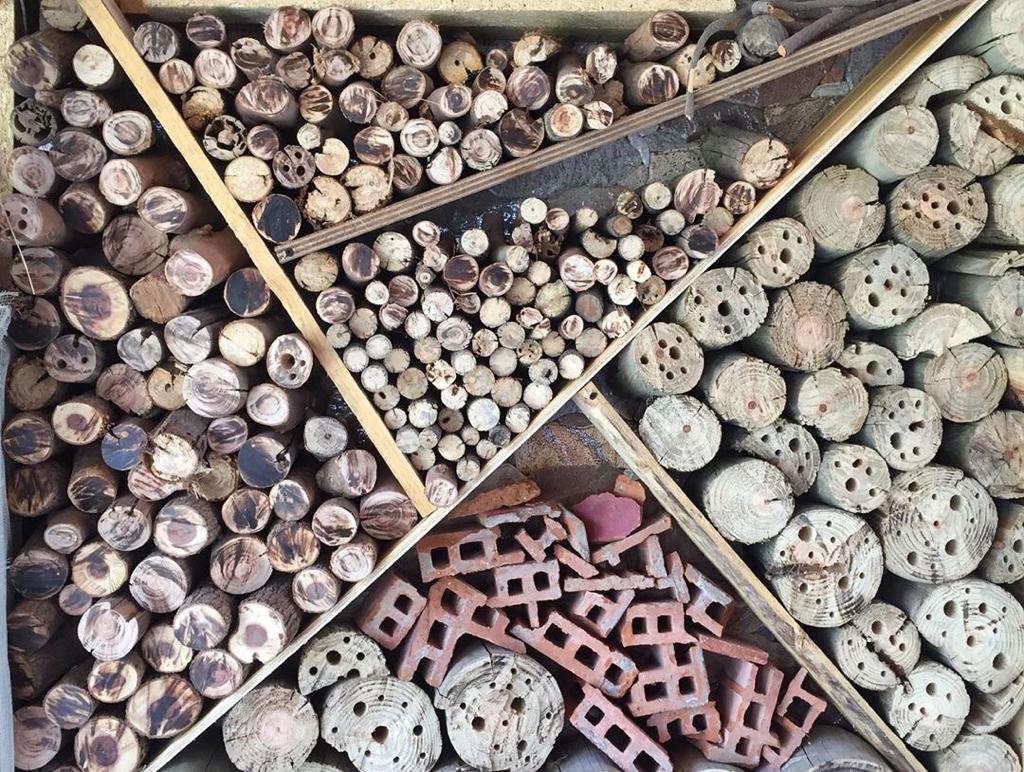
Filling material
Photography: Techos y Bichos
There is a huge variety of insects which can benefit from our mini-hotel, such as ladybugs, wild bees, bumblebees, lacewings and earwigs. Each one is housed in different rooms that provide warm and dry spaces. It is also important to mention that, the more flowers and plants we have, the bigger will be the variety of insects that arrive to our garden, and thus be housed in those shelters.
It is not news that throughout the years the use and abuse of chemicals and fertilizers in farms and gardens, has harmed the health of people and their ecosystems, even endangering some species, this is why it is important to foster the creation of “natural” spaces like these, and thus provide a space in our gardens to our little bug friends.
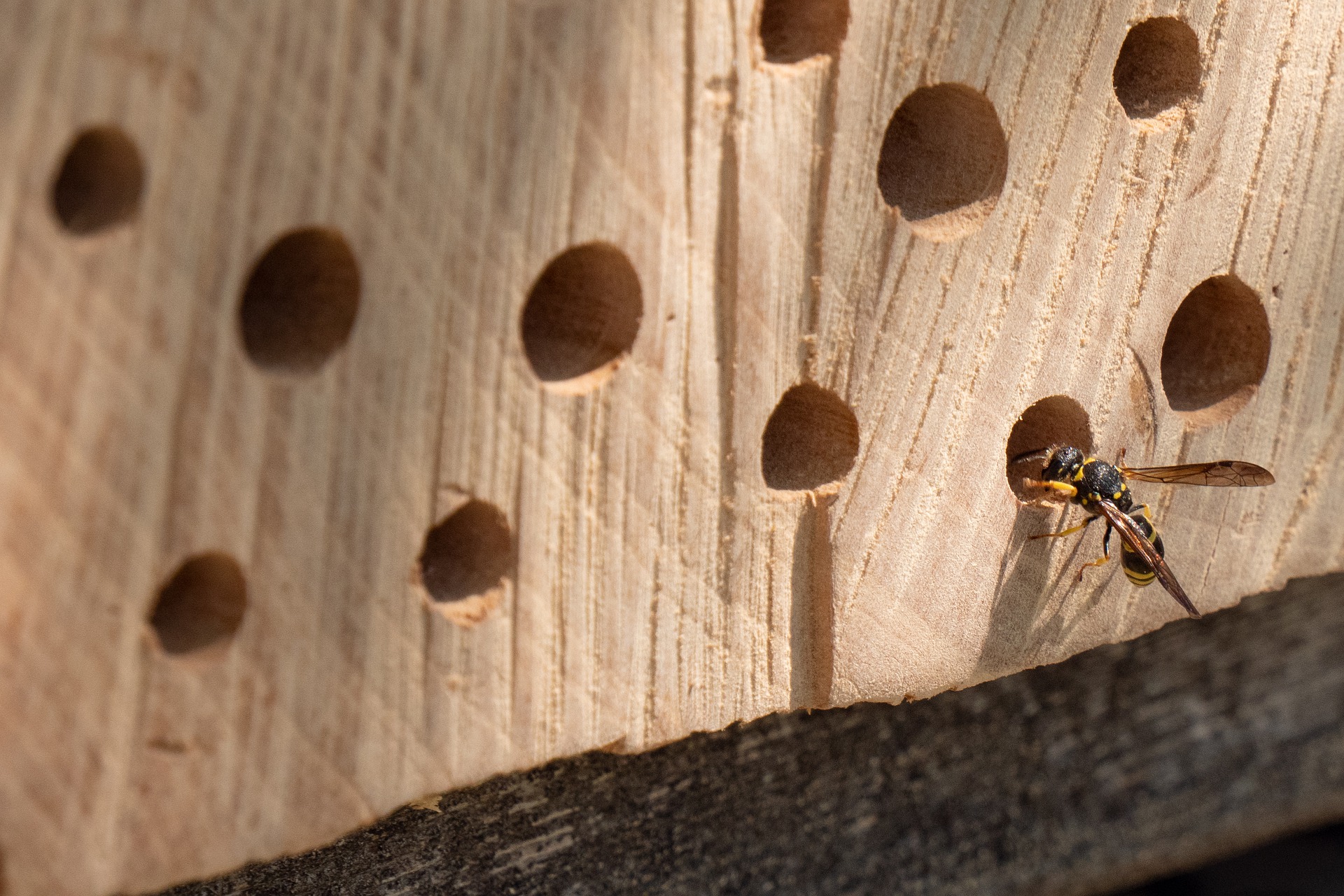
Insect visiting a hotel for insects
Photography: hbieser
SOME BUGS THAT WILL VISIT US
Ladybugs
Adult and baby ladybugs are happy devouring aphids, one of the most common and annoying pests you’ll find in your garden. They love spaces within slabs or tree barks.
Lacewings
For them you make the little gaps painted in red, they enjoy dry and warm straw within the mini-hotel. This is a species of fly similar to dragonflies, its larvae feed off pests such as white flies, aphids, and even cochineals.
Wild bees and wasps
There are thousands of species, and most of them are solitary – they don’t live in hives as the melliferous (the most common ones) do. They are also great pollinators, and they will be housed in the holes we have made within the wood logs and the bricks, which is where they will lay their larvae.
Other possible bug guests could be: Beetles, bumblebees, spiders, earwigs and several diptera.
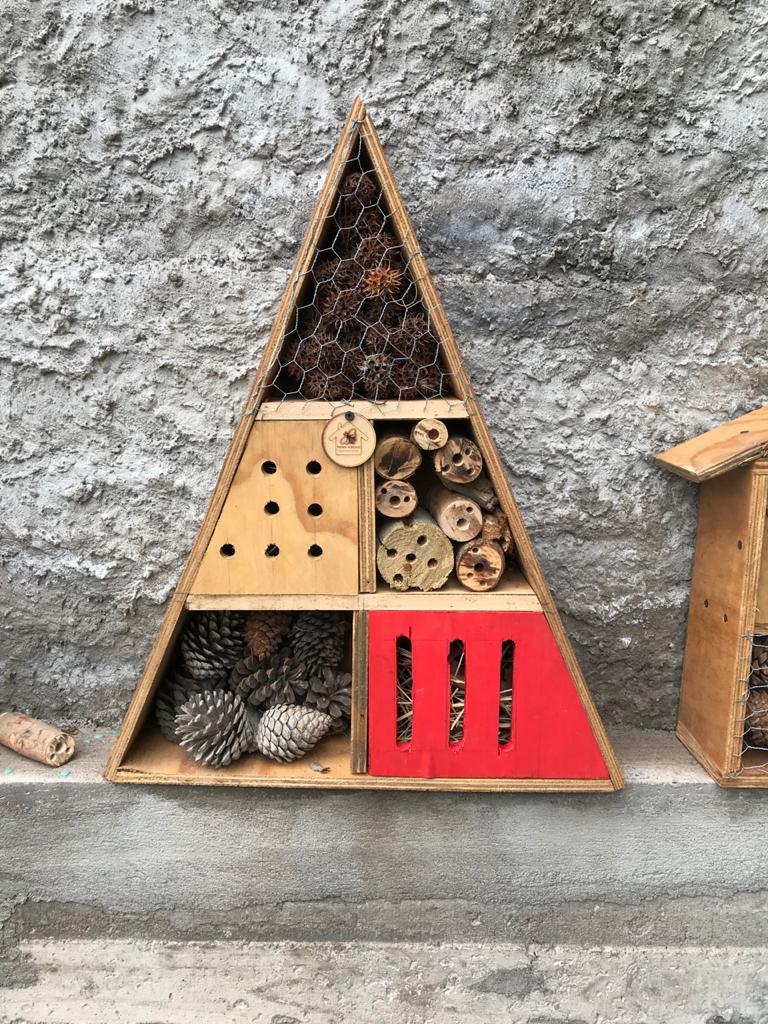
Types of Insect Hotels
Photography: Techos y Bichos
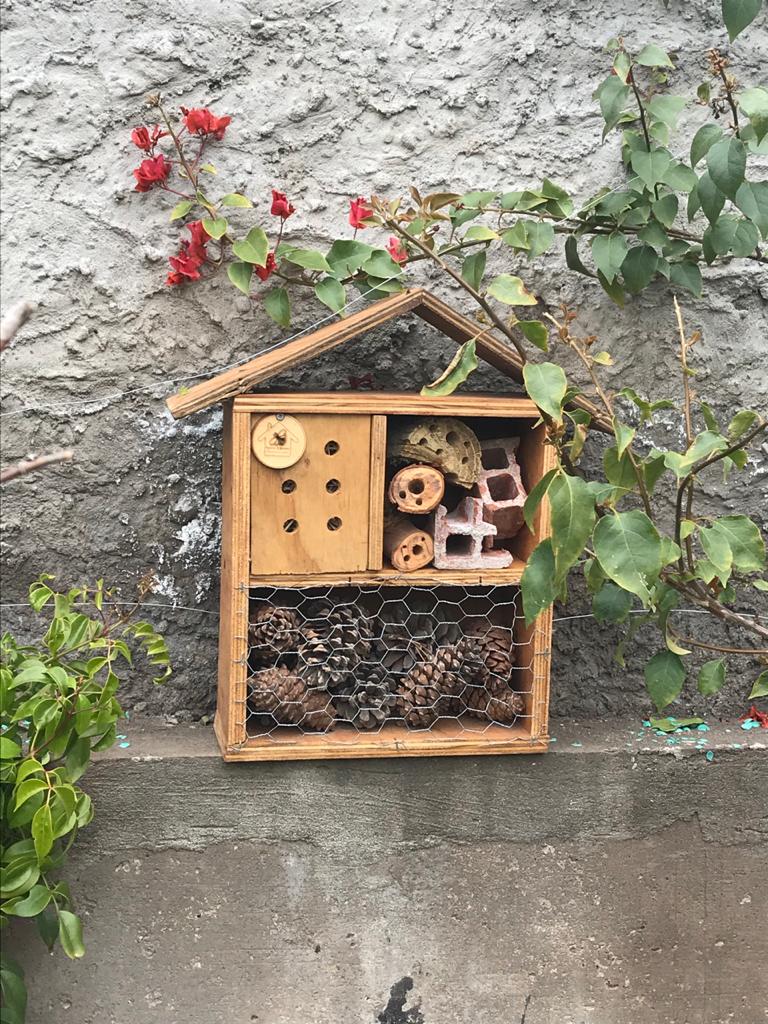
Types of Insect Hotels
Photography: Techos y Bichos
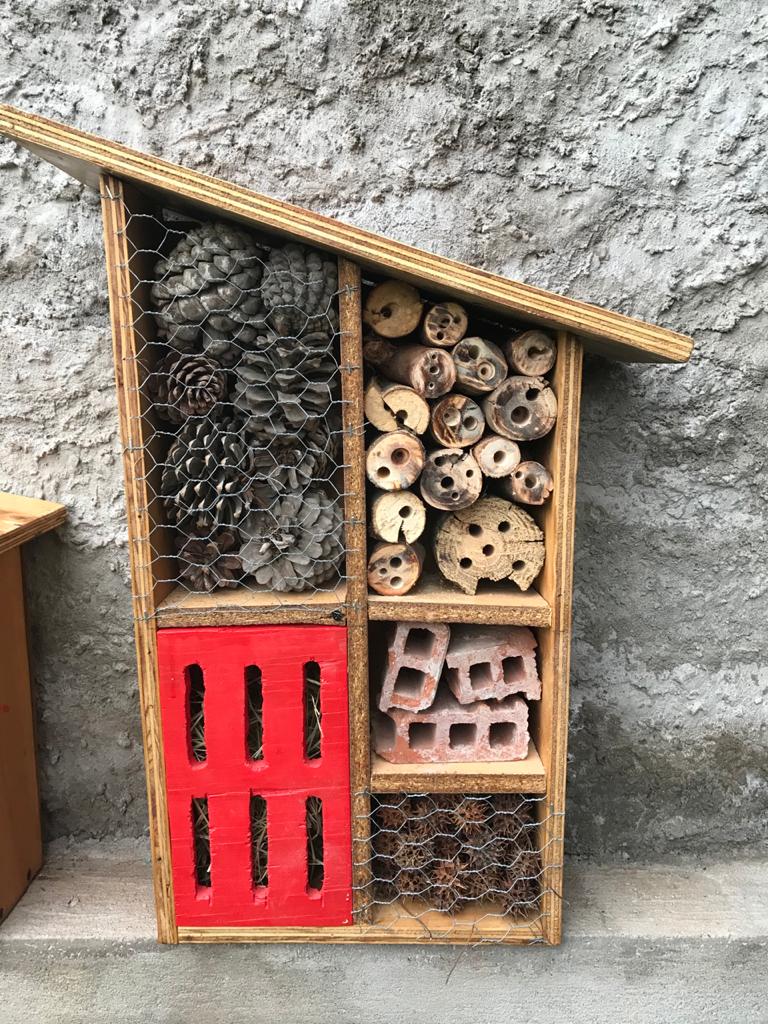
Types of Insect Hotels
Photography: Techos y Bichos
STEPS TO BUILD A BUG MINIHOTEL:
There is a wide variety of models you can follow to build your bug mini-hotel, and many of those can evoke the appearance of houses and buildings just let your imagination go wild, and build one of those beautiful spaces which will also provide a special aesthetic to your garden.
These beautiful hotels have the advantage of being cheap to build, and can be built in about 1 to 2 days. Today, we will show you how to build a triangular model.
WE WILL NEED
1. Tools to start building the chassis, as well as to fill and gradually seal the mini-hotel. We will need an electric chainsaw or a handsaw, a hammer, screws, clamps, pliers, stapler, etc.
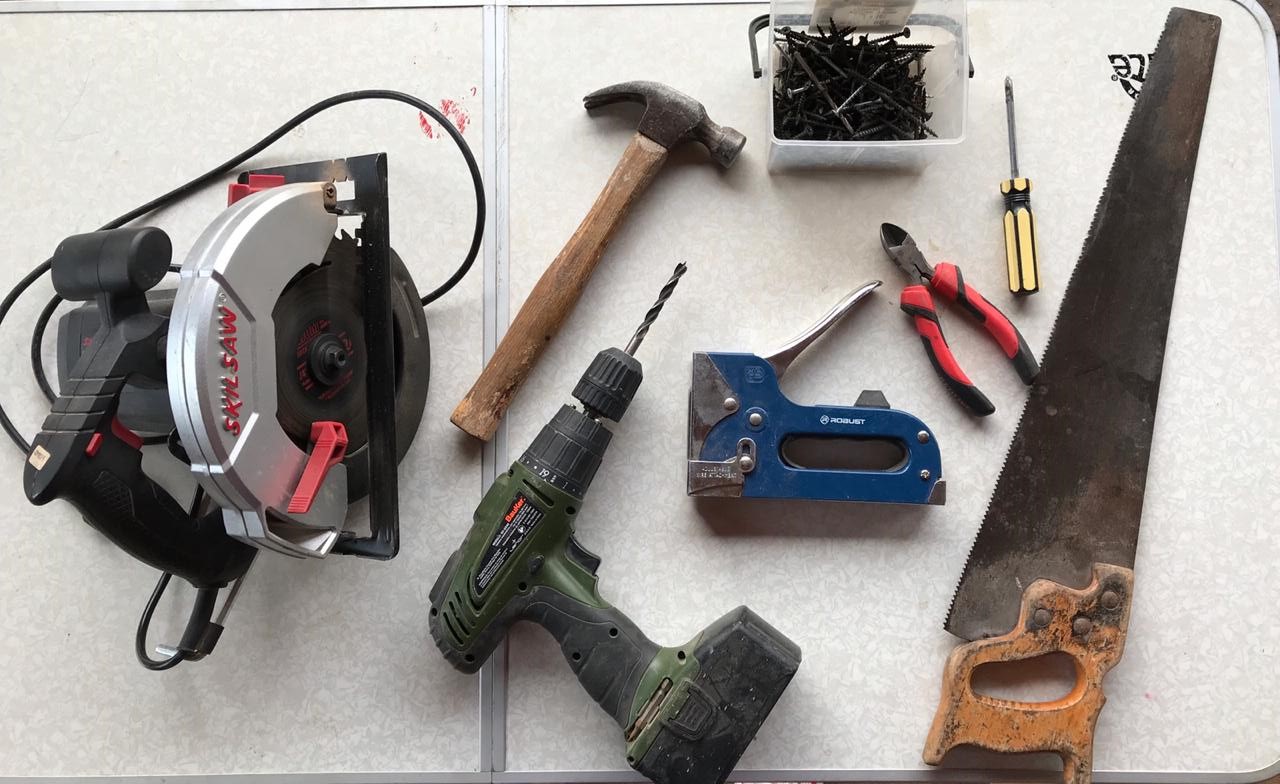
Tools
Photography: Techos y Bichos
2. Two slabs of 60 cm x 15 cm, and one slab of 50 cm x 15 cm, which we will use as the base of our triangle. We will close the back, building the shape of the chassis with old cans, a mesh, or slabs of the size of your mini-hotel. Don’t forget to sand them down and add flaxseed oil.
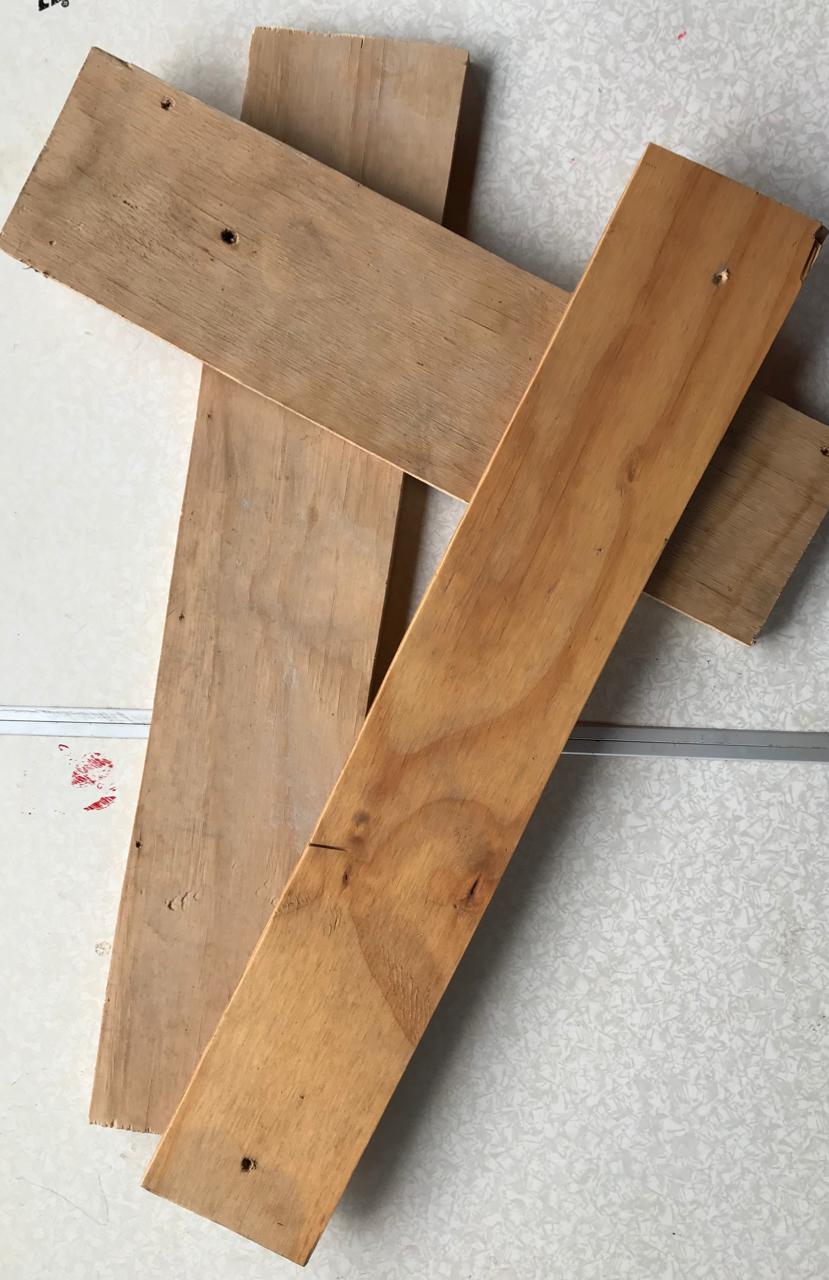
Frame boards
Photography: Techos y Bichos
3. Collect the materials you need from nature itself, or use recycled materials. You can use slabs or wooden poles for the chassis, and for the filling you can use pine cones, liquidambar seeds, old bricks, wooden logs and sticks, as well as straw.
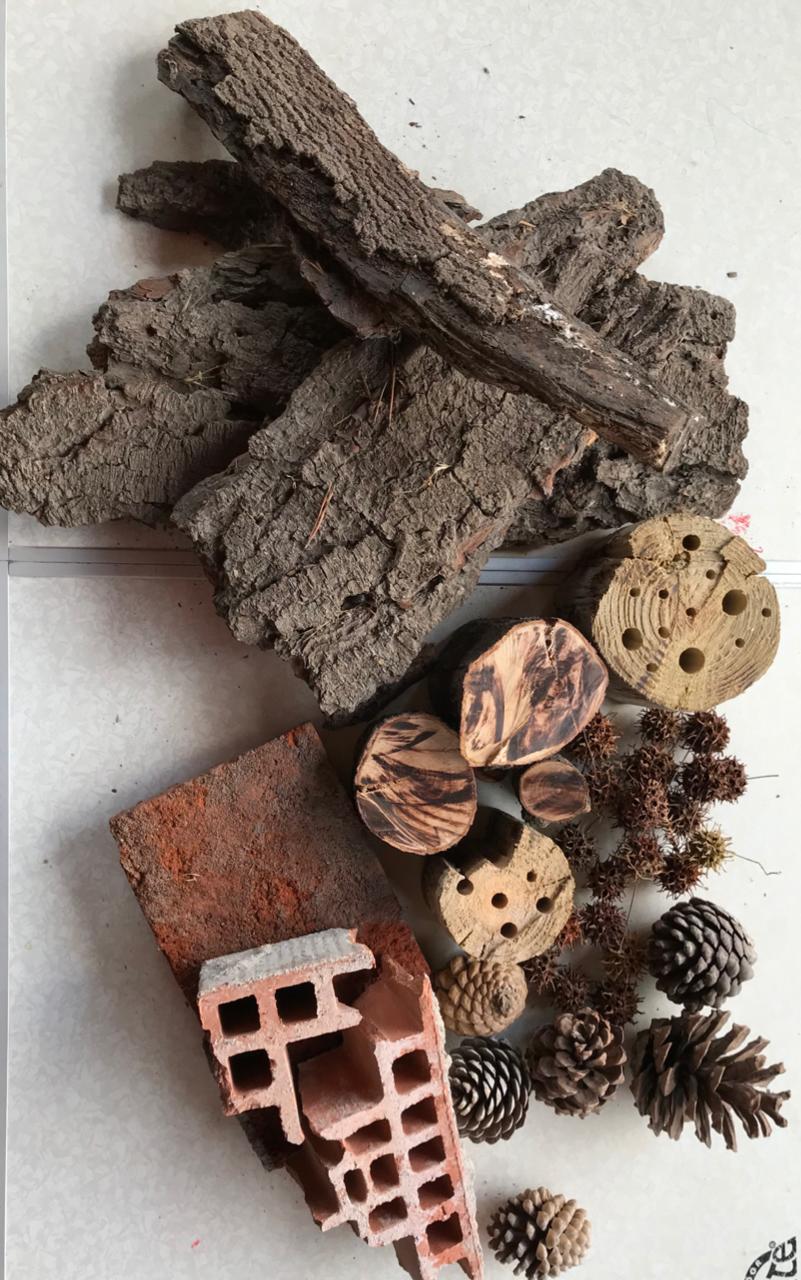
Filling materials
Photography: Techos y Bichos
4. Make the corresponding divisions for each room, and distribute the inner sizes according to the amount of filling material we have.
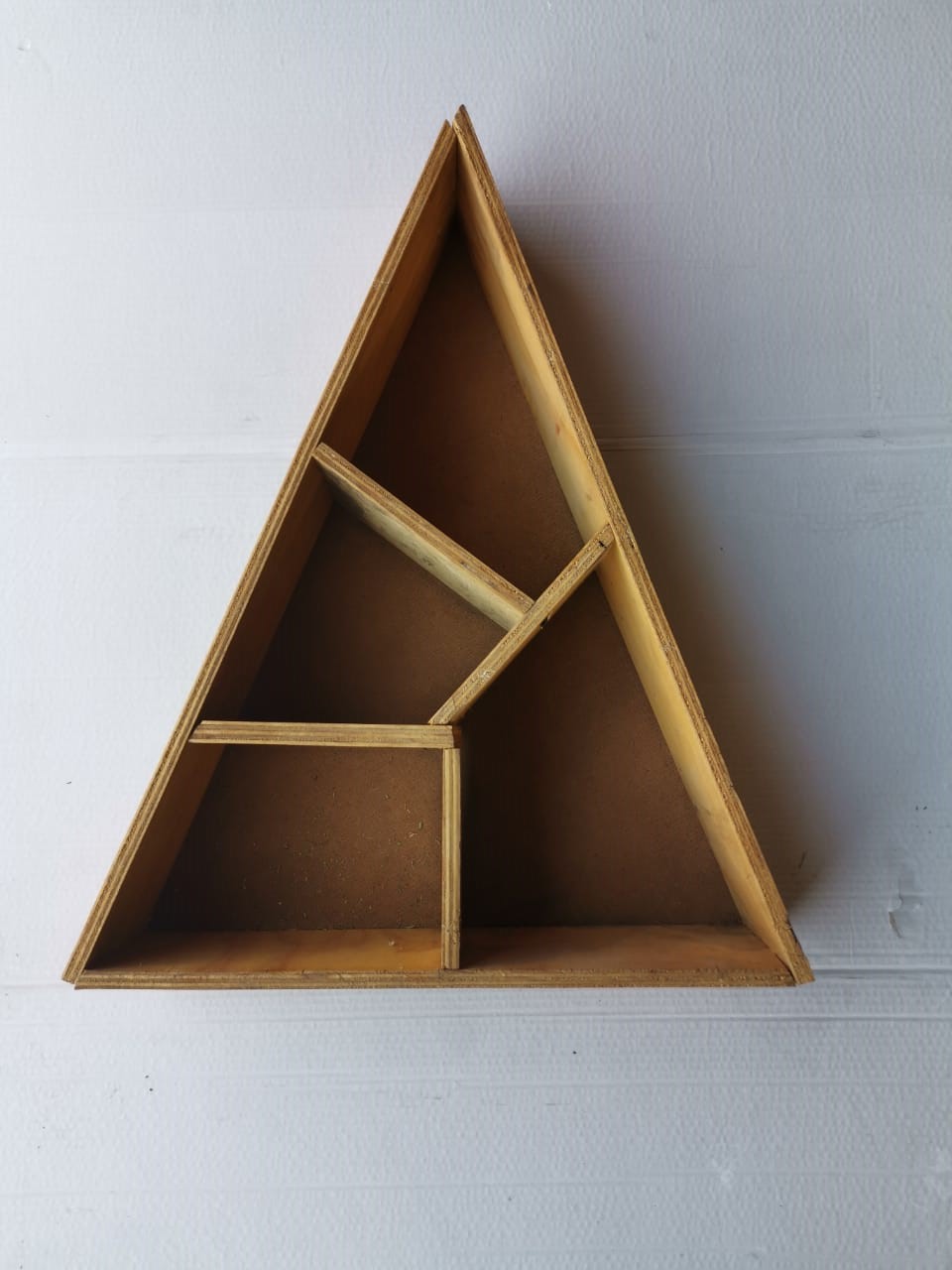
Structure
Photography: Techos y Bichos
5. Fill the mini-hotel’s compartments. You need to do the corresponding measurements and cuts so that all the implements fit within the mini-hotel, making sure they are well secured so they don’t fall off. Its structure must be strong, since after filling the mini-hotel it will end up having a significant weight.
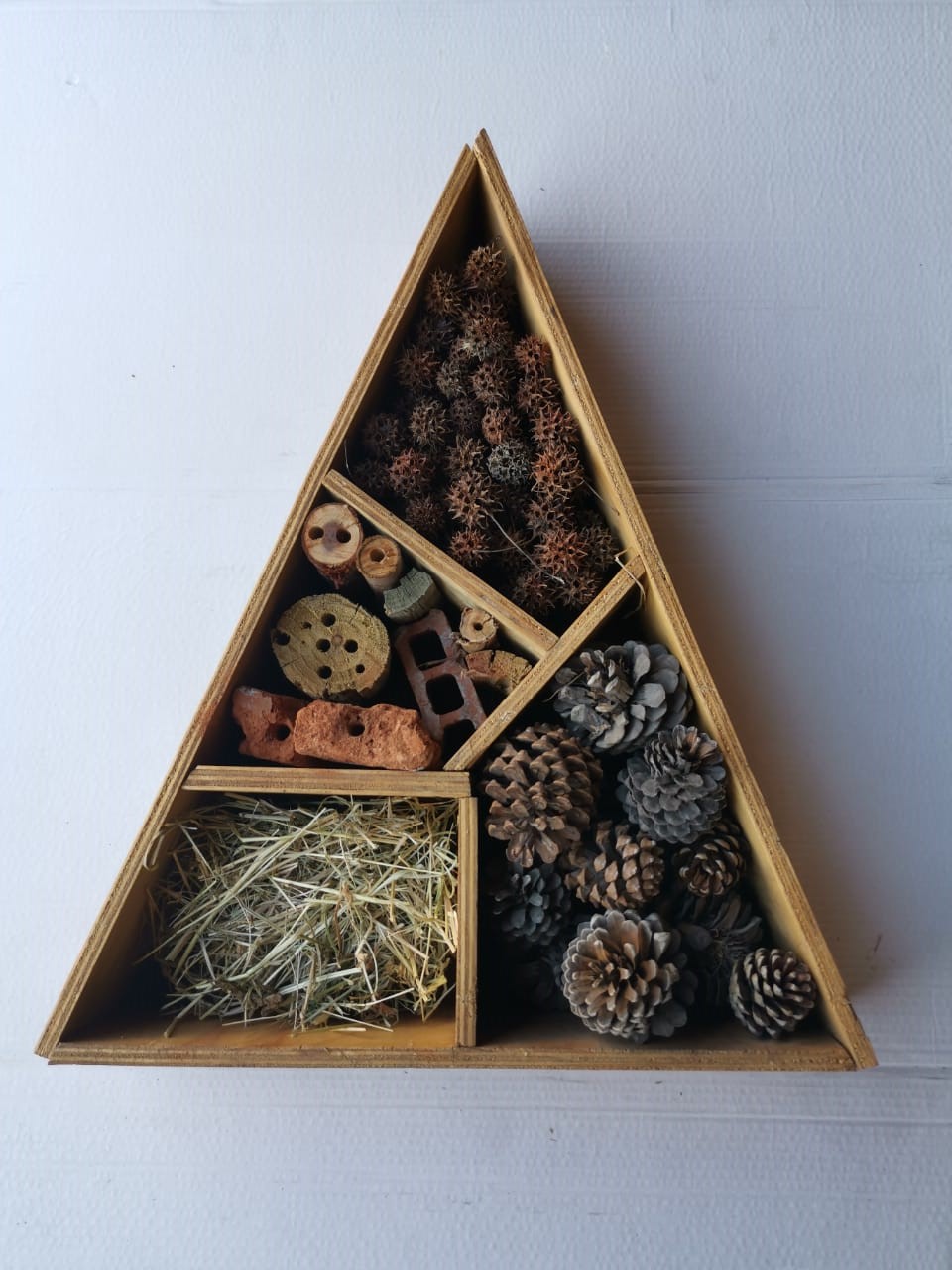
Fill the mini-hotel
Photography: Techos y Bichos
6. Finishing touches. We could add some more different rooms, and wooden covers with holes or gaps which will help provide access to the room with straw (located in the back), and put a mesh to secure the filling.
7. Use a mesh to contain the liquidambar seeds and the pine bark, so you stop them from falling off.
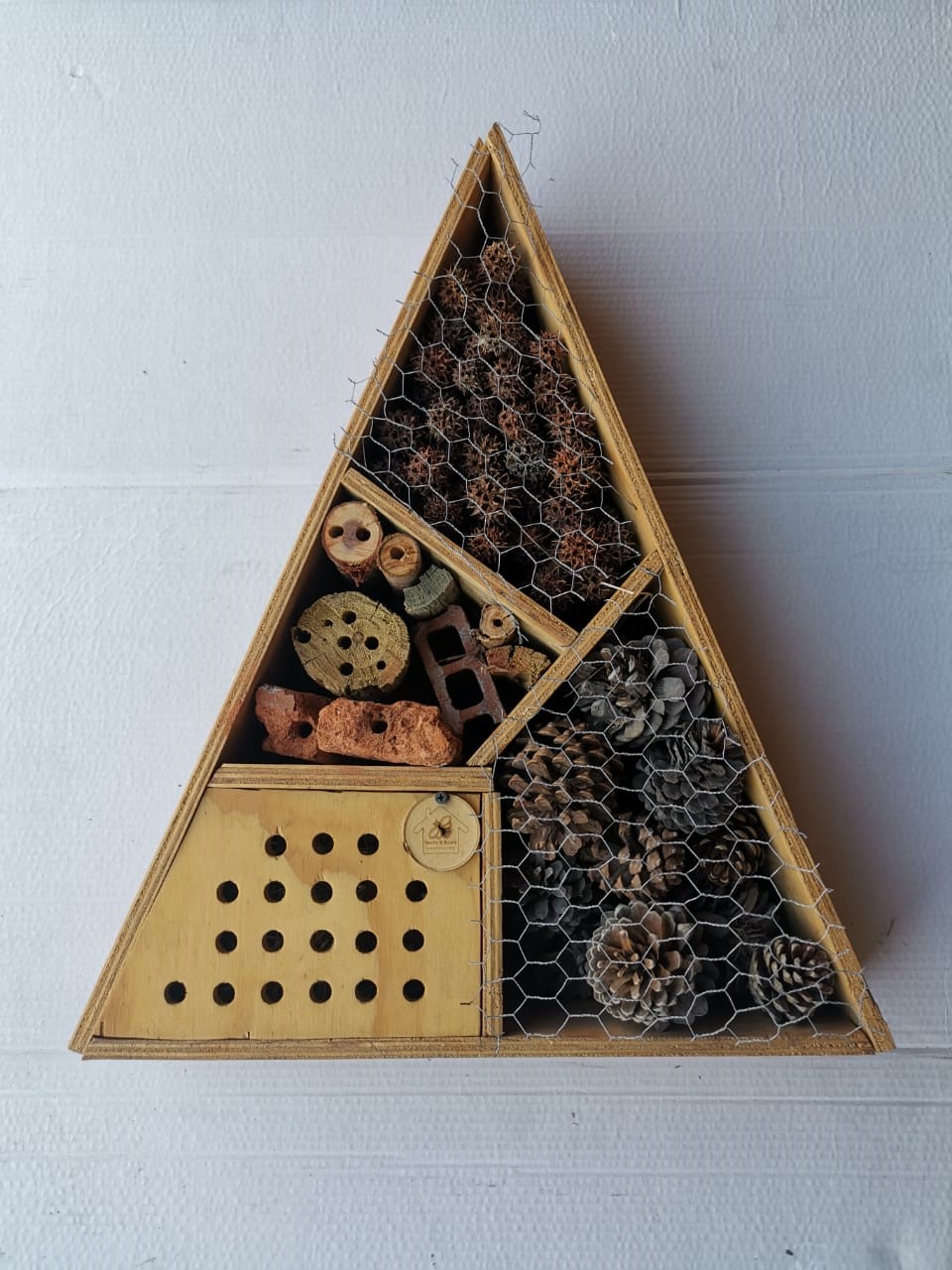
Put a mesh
Photography: Techos y Bichos
8. Finally, you have to make a hole in the back side of your bug mini-hotel so that you can install it on the wall, using a metal hook.
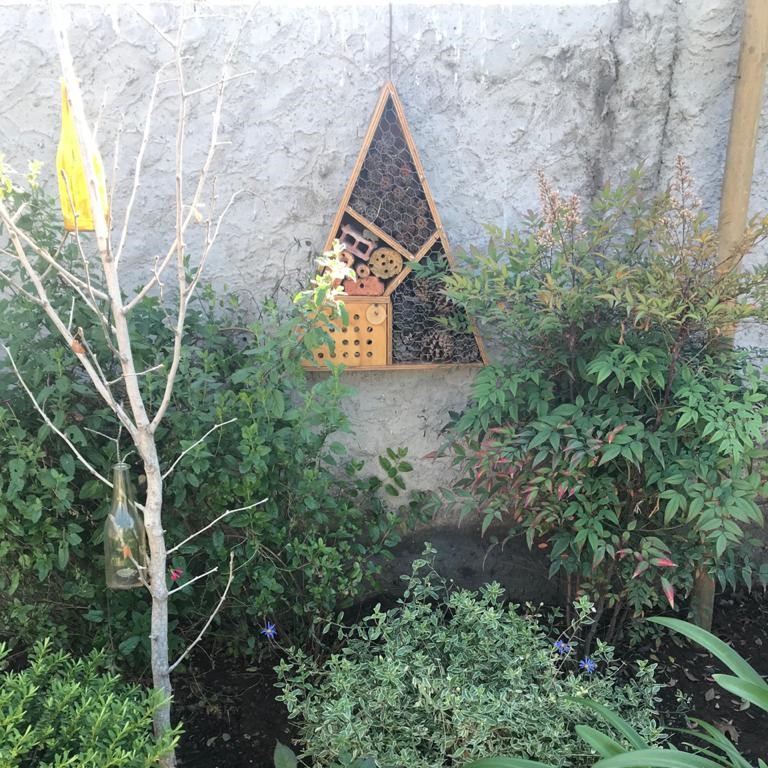
Insects Hotel
Photography: Techos y Bichos








